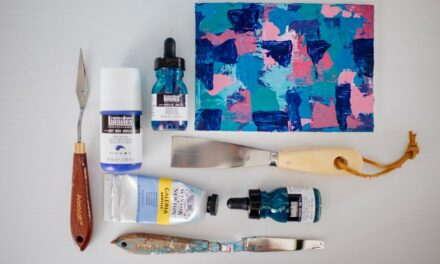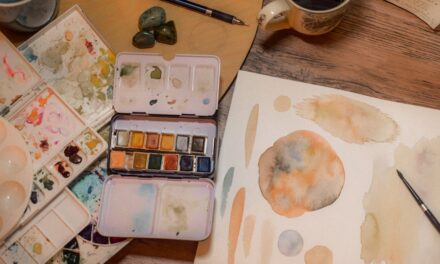In the realm of contemporary art, photo transfer methods have emerged as a powerful tool for artists seeking to incorporate photographic imagery into their work. These techniques allow for the seamless integration of photographs into various artistic mediums, enabling a unique blend of realism and abstraction. The ability to transfer images onto canvas, wood, or paper opens up a world of creative possibilities, allowing artists to explore themes of memory, identity, and the passage of time.
As technology continues to evolve, so too do the methods available for artists, making it essential to understand the various approaches to photo transfer. Photo transfer methods can be broadly categorised into traditional and digital techniques. Traditional methods often involve physical materials such as tracing paper or transfer paper, while digital methods leverage software and printers to achieve similar results.
Each approach has its own set of advantages and challenges, and the choice of method can significantly impact the final outcome of an artwork. By mastering these techniques, artists can enhance their underdrawings, creating a solid foundation for their paintings or mixed media pieces. This article will delve into several popular photo transfer methods, providing insights and tips for achieving realistic underdrawings that serve as a springboard for further artistic exploration.
Summary
- Photo transfer methods are a valuable tool for creating realistic underdrawings in art.
- The grid method is a traditional technique that involves dividing the original image and the drawing surface into a grid for accurate transfer.
- Tracing paper technique allows artists to trace the main outlines and details of the original image onto the drawing surface.
- Transfer paper is a quick and easy method for transferring images onto drawing surfaces, using pressure to transfer the image onto the paper.
- Digital photo transfer methods offer a modern approach to transferring images onto drawing surfaces, using software and printers to create accurate underdrawings.
Using Grid Method for Realistic Underdrawings
The grid method is a time-honoured technique that has been employed by artists for centuries to achieve accurate proportions and perspectives in their work. This method involves dividing both the reference photograph and the drawing surface into a grid of equal squares. By carefully observing and replicating the contents of each square, artists can create a realistic underdrawing that captures the essence of the original image.
The grid method is particularly beneficial for those who may struggle with freehand drawing, as it provides a structured framework that guides the artist’s hand. To begin using the grid method, one must first select a reference photograph and print it out at the desired size. Next, a grid is drawn over the photograph, typically consisting of squares that are one inch or two inches in size, depending on the scale of the artwork.
The same grid is then lightly sketched onto the drawing surface. As the artist works through each square, they focus solely on replicating what they see within that specific section, rather than attempting to capture the entire image at once. This approach not only aids in achieving accurate proportions but also encourages a more thoughtful observation of details, resulting in a more lifelike representation.
Tracing Paper Technique for Realistic Underdrawings
The tracing paper technique is another effective method for creating realistic underdrawings. This approach involves placing a sheet of tracing paper over a printed photograph and carefully tracing the outlines and key details of the image. Once the tracing is complete, the artist can transfer this drawing onto their chosen surface by either using graphite transfer or by retracing the lines with a pencil or pen.
This technique is particularly advantageous for artists who wish to maintain fidelity to their reference image while also allowing for some degree of artistic interpretation. One of the primary benefits of using tracing paper is its transparency, which allows artists to see through to the original photograph while they work. This feature enables them to focus on capturing essential elements such as contours, shadows, and highlights without becoming overwhelmed by the complexity of the entire image.
Additionally, tracing paper can be easily manipulated; artists can reposition it as needed to ensure that their underdrawing aligns perfectly with their intended composition. This flexibility makes it an ideal choice for those who are still developing their drawing skills or who wish to experiment with different layouts before committing to a final design.
Using Transfer Paper for Realistic Underdrawings
Transfer paper is a versatile tool that can facilitate the creation of realistic underdrawings with relative ease. This method involves placing a sheet of transfer paper—often coated with graphite or carbon—between the reference image and the drawing surface. By applying pressure with a pencil or stylus over the lines of the reference image, the artist effectively transfers the outlines onto their chosen medium.
This technique is particularly useful for artists who prefer a more direct approach to transferring images without relying on freehand drawing or complex grid systems. One of the key advantages of using transfer paper is its ability to produce clean and precise lines that can serve as a solid foundation for further artistic development. Unlike other methods that may require extensive erasing or adjustments, transfer paper allows for quick and efficient image replication.
Furthermore, it can be used on various surfaces, including canvas, wood, and even textured papers, making it an adaptable choice for different artistic projects. However, artists should be mindful of the pressure applied during the transfer process; too much force can result in smudging or tearing of both the transfer paper and the underlying surface.
Digital Photo Transfer Methods for Realistic Underdrawings
In an increasingly digital world, artists have access to innovative tools that can streamline the photo transfer process. Digital photo transfer methods involve using software applications to manipulate images before printing them onto various surfaces. This approach allows artists to adjust aspects such as size, contrast, and colour balance, ensuring that their underdrawings are tailored to their specific artistic vision.
Additionally, digital methods can facilitate the incorporation of multiple images into a single composition, providing endless creative possibilities. To utilise digital photo transfer methods effectively, artists typically begin by scanning or photographing their reference images and importing them into graphic design software. From there, they can make adjustments as needed before printing the final image onto transfer paper or directly onto their chosen medium.
Some artists may also choose to print onto transparent film or acetate sheets, allowing for further layering and manipulation in their work. The flexibility offered by digital methods not only enhances an artist’s ability to create realistic underdrawings but also encourages experimentation with mixed media techniques.
Tips for Achieving Realistic Underdrawings with Photo Transfer Methods
Selecting High-Quality Reference Images
One essential tip is to select high-quality reference images that are well-lit and in focus; this will ensure that the details are clear and easily translatable onto your drawing surface. Additionally, consider adjusting your reference image’s contrast and brightness before transferring it; this can help highlight important features and make them easier to replicate.
Practising Patience Throughout the Process
Another important aspect is to practice patience throughout the process. Whether using traditional or digital methods, taking your time to observe and replicate details will yield more accurate results. It can be helpful to step back periodically from your work to assess your progress from a distance; this will allow you to identify any discrepancies in proportions or details that may need adjustment.
Combining Different Photo Transfer Methods
Finally, don’t hesitate to combine different photo transfer methods; blending techniques can lead to unique outcomes that enhance your artistic expression.
Common Mistakes to Avoid when Using Photo Transfer Methods
While photo transfer methods can be incredibly effective for creating realistic underdrawings, there are several common pitfalls that artists should be aware of in order to avoid frustration and disappointment in their work. One frequent mistake is neglecting to properly prepare both the reference image and drawing surface before beginning the transfer process. Ensuring that surfaces are clean and free from dust or debris will help prevent unwanted marks or smudges from interfering with your final piece.
Another common error is applying excessive pressure during the transfer process, particularly when using transfer paper or tracing techniques.
Instead, aim for a gentle yet consistent application of pressure; this will help maintain clarity in your lines while preserving the quality of both your reference image and drawing surface.
Lastly, many artists underestimate the importance of practice; honing your skills through regular experimentation with different photo transfer methods will ultimately lead to greater confidence and proficiency in your artistic endeavours.
Conclusion and Further Resources for Realistic Underdrawings with Photo Transfer Methods
In conclusion, photo transfer methods offer artists an invaluable toolkit for creating realistic underdrawings that serve as a foundation for further artistic exploration. By understanding various techniques such as the grid method, tracing paper technique, transfer paper application, and digital photo manipulation, artists can enhance their ability to translate photographic imagery into compelling works of art. Each method presents its own unique advantages and challenges; therefore, it is essential for artists to experiment with different approaches in order to discover what resonates most with their individual style.
For those seeking further resources on realistic underdrawings using photo transfer methods, numerous books and online tutorials are available that delve deeper into each technique discussed in this article. Engaging with online art communities can also provide valuable insights and feedback from fellow artists who share similar interests in photo transfer techniques. Ultimately, embracing these methods not only enriches an artist’s skill set but also opens up new avenues for creative expression in an ever-evolving artistic landscape.
If you are interested in learning more about the painting “The Poor Poet” by Carl Spitzweg, I recommend checking out this article on Think of Art. This painting is a classic example of 19th-century German art and provides insight into the life of a struggling poet. The article delves into the history and significance of this iconic work, offering a deeper understanding of Spitzweg’s artistic vision.


